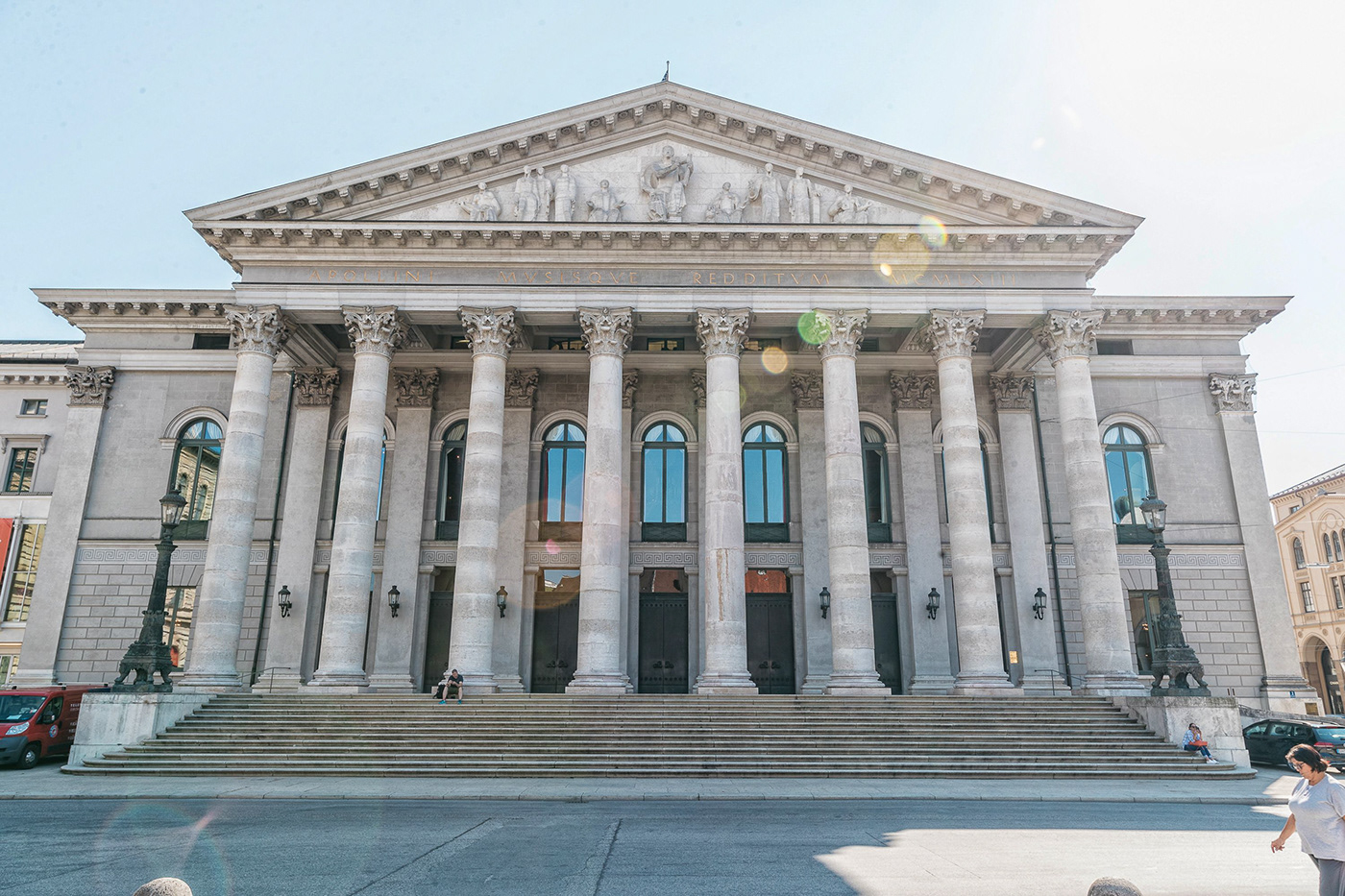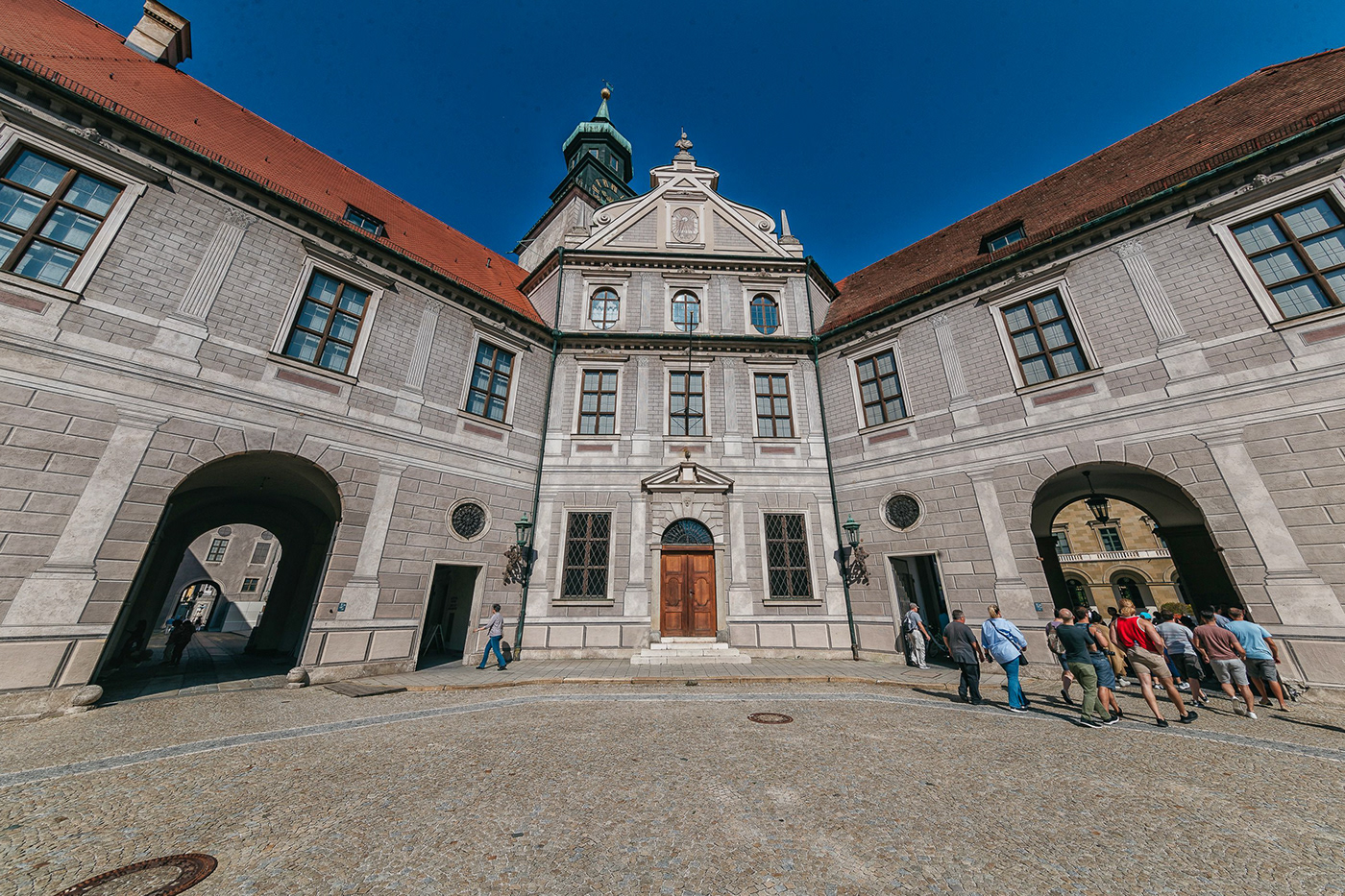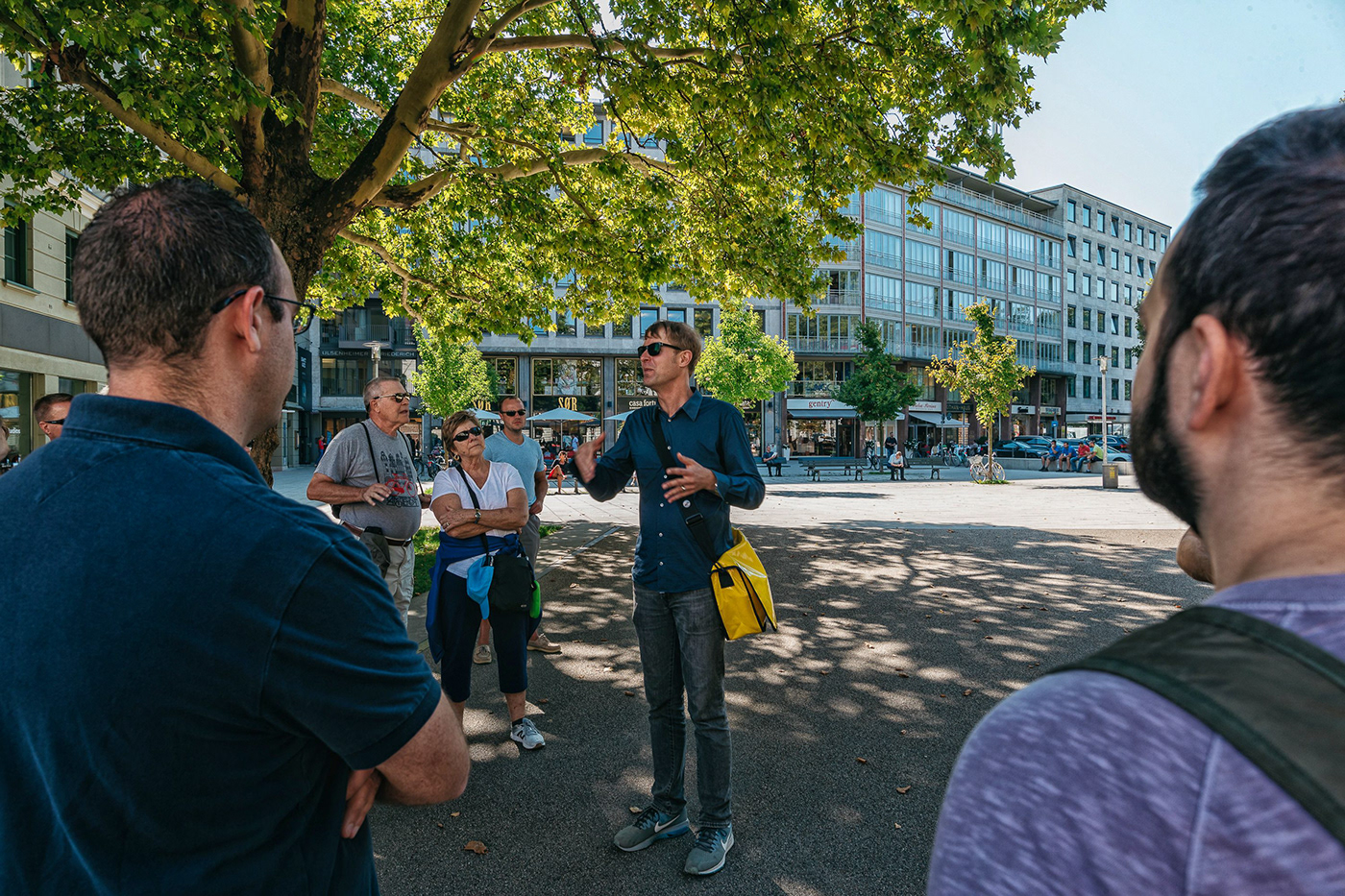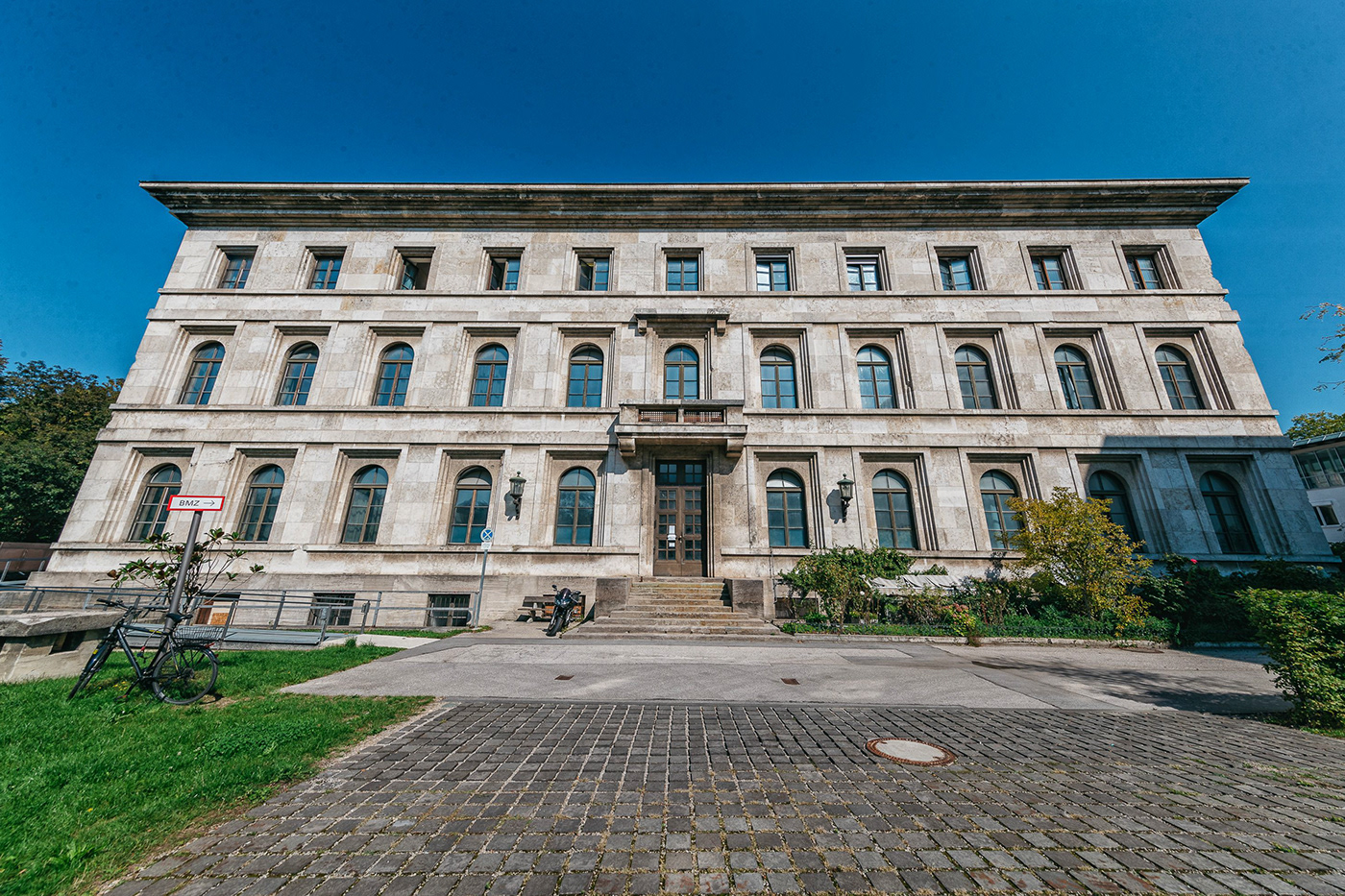Third Reich Tour - was a walking tour we got ourselves enrolled as Munich played a very important role in shaping the political career of Adolf Hitler. we got to see the places where he used to have his meetings, administrative buildings of the Nazi party and everything related to world war II. i have added captions to the images so do have a look at them
sept 20, 2018 Munich, Germany

The Munich National Theater - The National Theatre on Max-Joseph-Platz in Munich, Germany, is a historic opera house, home of the Bavarian State Opera, Bavarian State Orchestra and the Bavarian State Ballet.

The Feldherrnhalle is a monumental loggia on the Odeonsplatz in Munich, Germany. Modelled after the Loggia dei Lanzi in Florence, it was commissioned in 1841 by King Ludwig I of Bavaria to honour the tradition of Bavarian Army. In 1923, it was the site of the brief battle that ended Hitler's Beer Hall Putsch.

The Theatine Church of St. Cajetan is a Catholic church in Munich, southern Germany. Built from 1663 to 1690, it was founded by Elector Ferdinand Maria and his wife, Henriette Adelaide of Savoy, as a gesture of thanks for the birth of the long-awaited heir to the Bavarian crown, Prince Max Emanuel, in 1662.

The Theatine Church of St. Cajetan is a Catholic church in Munich, southern Germany. Built from 1663 to 1690, it was founded by Elector Ferdinand Maria and his wife, Henriette Adelaide of Savoy, as a gesture of thanks for the birth of the long-awaited heir to the Bavarian crown, Prince Max Emanuel, in 1662.

The Feldherrnhalle is a monumental loggia on the Odeonsplatz in Munich, Germany. Modelled after the Loggia dei Lanzi in Florence, it was commissioned in 1841 by King Ludwig I of Bavaria to honour the tradition of Bavarian Army. In 1923, it was the site of the brief battle that ended Hitler's Beer Hall Putsch.

Munich Residenz - The Residenz in central Munich is the former royal palace of the Wittelsbach monarchs of Bavaria. The Residenz is the largest city palace in Germany and is today open to visitors for its architecture, room decorations, and displays from the former royal collections.

Munich Residenz - The Residenz in central Munich is the former royal palace of the Wittelsbach monarchs of Bavaria. The Residenz is the largest city palace in Germany and is today open to visitors for its architecture, room decorations, and displays from the former royal collections.

The Residenz in central Munich is the former royal palace of the Wittelsbach monarchs of Bavaria. The Residenz is the largest city palace in Germany and is today open to visitors for its architecture, room decorations, and displays from the former royal collections.

Munich Residenz - The Residenz in central Munich is the former royal palace of the Wittelsbach monarchs of Bavaria. The Residenz is the largest city palace in Germany and is today open to visitors for its architecture, room decorations, and displays from the former royal collections.

Munich Residenz - The Residenz in central Munich is the former royal palace of the Wittelsbach monarchs of Bavaria. The Residenz is the largest city palace in Germany and is today open to visitors for its architecture, room decorations, and displays from the former royal collections.

The Hofgarten is a garden in the center of Munich, Germany, located between the Residenz and the Englischer Garten

The Hofgarten is a garden in the center of Munich, Germany, located between the Residenz and the Englischer Garten

our tour guide, on the third reich tour

the holocaust memorial and the eternal flame



The Führerbau - this building used to be the former headquarters of the nazi party and there a re a ton of historic photos which show the nazi flag on this building. today, it is converted to a public library

The Führerbau - this building used to be the former headquarters of the nazi party and there a re a ton of historic photos which show the nazi flag on this building. today, it is converted to a public library

The Propylaea is a city gate in Munich at the west side of Königsplatz.

The Glyptothek is a museum in Munich, Germany, which was commissioned by the Bavarian King Ludwig I to house his collection of Greek and Roman sculptures. It was designed by Leo von Klenze in the neoclassical style, and built from 1816 to 1830. Today the museum is a part of the Kunstareal

The Glyptothek is a museum in Munich, Germany, which was commissioned by the Bavarian King Ludwig I to house his collection of Greek and Roman sculptures. It was designed by Leo von Klenze in the neoclassical style, and built from 1816 to 1830. Today the museum is a part of the Kunstareal

The Glyptothek is a museum in Munich, Germany, which was commissioned by the Bavarian King Ludwig I to house his collection of Greek and Roman sculptures. It was designed by Leo von Klenze in the neoclassical style, and built from 1816 to 1830. Today the museum is a part of the Kunstareal

The Staatliche Antikensammlungen (State Collections of Antiquities) is a museum in Munich's Kunstareal holding Bavaria's collections of antiquities from Greece, Etruria and Rome, though the sculpture collection is located in the opposite Glyptothek and works created in Bavaria are on display in a separate museum.Ancient Egypt also has its own museum., The neo-classical building at Königsplatz with Corinthian columns was established in 1848 as counterpart to the opposite Glyptothek and commissioned by the Bavarian King Ludwig I. The architect was Georg Friedrich Ziebland. Already from 1869 to 1872 the building housed the royal antiquarium before the Munich Secession resided here from 1898 to 1912. From 1919 the building contained the New State Gallery. The museum building was severely damaged by bombing in World War II but was reconstructed and reopened to the public in the late 1960s to display the State Collection of Antiques.

The Staatliche Antikensammlungen (State Collections of Antiquities) is a museum in Munich's Kunstareal holding Bavaria's collections of antiquities from Greece, Etruria and Rome, though the sculpture collection is located in the opposite Glyptothek and works created in Bavaria are on display in a separate museum.Ancient Egypt also has its own museum., The neo-classical building at Königsplatz with Corinthian columns was established in 1848 as counterpart to the opposite Glyptothek and commissioned by the Bavarian King Ludwig I. The architect was Georg Friedrich Ziebland. Already from 1869 to 1872 the building housed the royal antiquarium before the Munich Secession resided here from 1898 to 1912. From 1919 the building contained the New State Gallery. The museum building was severely damaged by bombing in World War II but was reconstructed and reopened to the public in the late 1960s to display the State Collection of Antiques.






